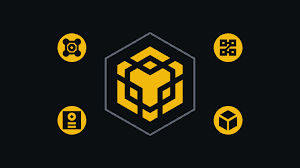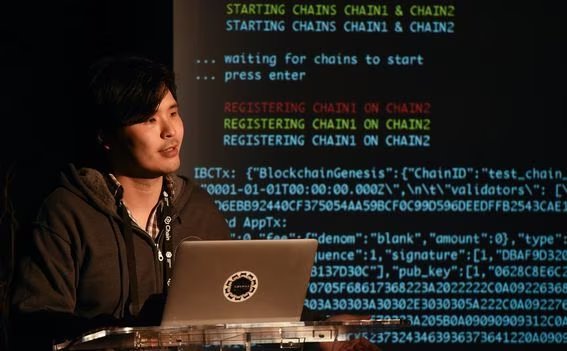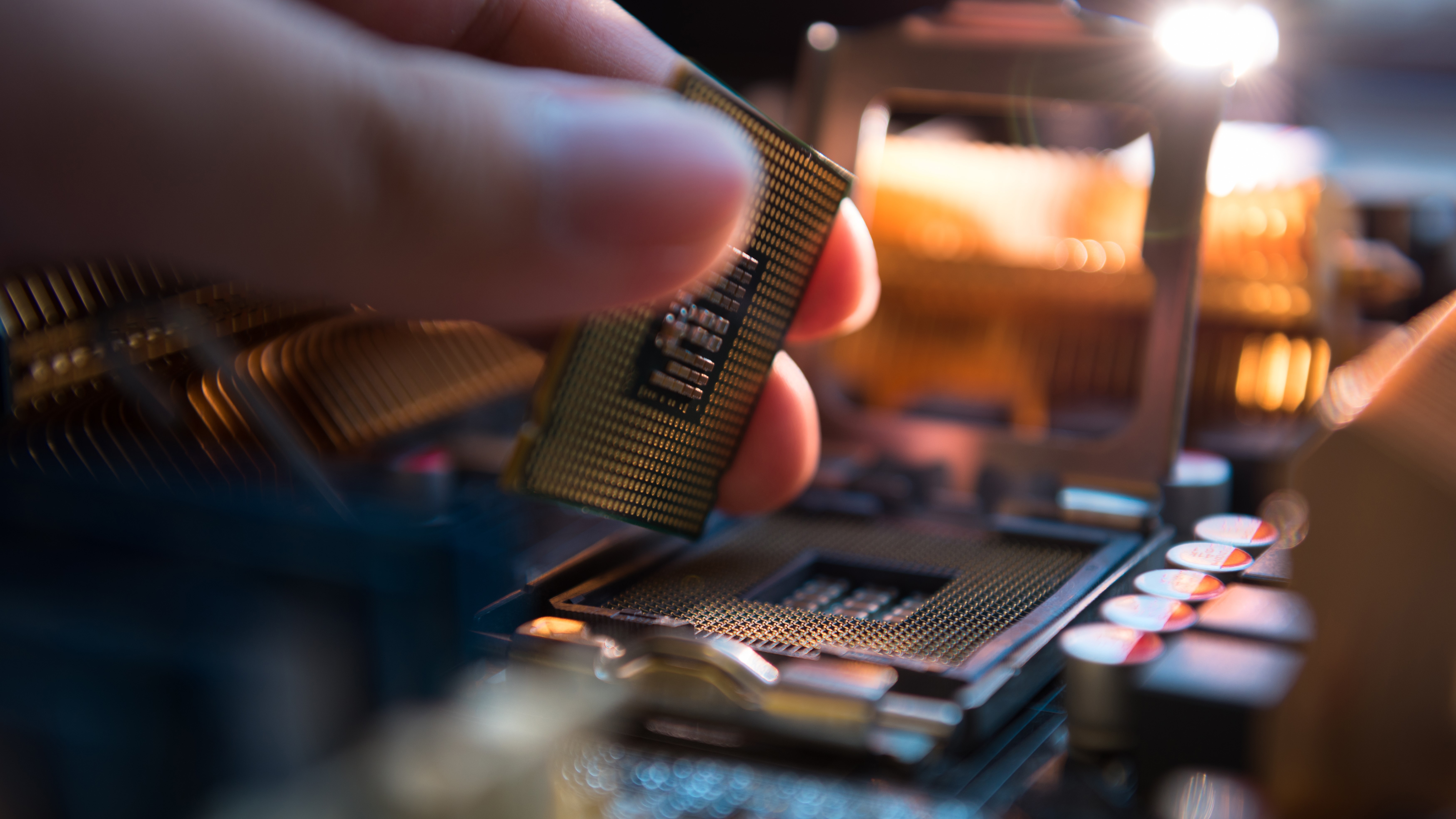TL;DR: With a new update or project being released almost every day, it’s clear the crypto ecosystem is constantly evolving. Litecoin has gone through a lot of ups and downs to reach the level it’s at today — but it’s just the beginning. Knowing what brought it here and why it was created will lead you to make better decisions when investing or simply using Litecoin.
In this article, we’re gonna dive into the Litecoin ecosystem, answer all the $LTC related questions and even more. Prepare yourself for a history lesson and a journey to the future of Litecoin!
What is Litecoin (LTC)?
Litecoin is a Layer 1 blockchain created in 2011 by Charlie Lee. It is a Bitcoin fork that focuses on being more scalable.
Scalability is defined as the amount of transactions that Litecoin can process per second, or throughput. Litecoin has a processing speed of 54 TPS, compared to Bitcoin’s 7 TPS. Litecoin is able to process transactions 7.2 times faster than Bitcoin sharing the same block size of 1 MB.
The block size equals to the amount of data that can be stored. Although Satoshi doesn’t give explanations as to why he coded the block size at 1 MB, there are a couple implications that are worth exploring.
One of them is the fact that a higher block size would require more resources such as better internet connection. If one node wanted to upload a large block to its peers, the potential delays in block transfers could cause the system to go out of sync. This would result in temporary chain splits, called forks.
On the other hand, a smaller block size leads to more transactions lining up to be added to the next block. Some speculate that even Satoshi himself couldn’t predict that blocks would become overcrowded with data.
On average, new blocks on the Litecoin network are generated about every 2.5 minutes, which is four times faster than Bitcoin, where blocks are mined approximately every 10 minutes. Consequently, Litecoin’s transaction throughput is also roughly four times faster than Bitcoin’s.
The consensus mechanism that Litecoin uses is called Proof of Work. PoW means that Litecoin gets its security from miners that complete difficult calculations by running a hash algorithm to add the next block.
Early on, Bitcoin mining has turned into a competitive business. Coins were mined using the graphics processing unit, or GPU. But engineers quickly figured they could develop new machines strictly for the purposes of mining Bitcoin. This is how the Application-specific integrated circuits (ASICs) were created.
ASICs outperformed GPUs, as they could mine blocks much faster and get the reward before everyone else. Few people had the knowledge, time, and capital to acquire and maintain ASICs. As a consequence, Bitcoin network has become centralized and exclusive.
Litecoin was developed to use the Scrypt hashing algorithm, which is different from Bitcoin’s SHA-256 hashing algorithm. Scrypt is a memory-intensive algorithm that was designed to deter GPUs and ASICs. The goal was to make Litecoin network more accessible to the people. So it was important for the individuals to be able to mine LTC with their CPUs in the beginning.
In time, Scrypt-capable ASICs were created and now virtually all Litecoin mining is done using this hardware. Due to Litecoin’s use of the Scrypt algorithm, ASIC devices made for mining LTC are more complicated to create and more expensive than they are for Bitcoin.
The concept of blockchains is not new, and Litecoin is one of many such networks. The idea started in 2008 with the release of Satoshi Nakamoto’s Bitcoin Whitepaper. This kicked off the subsequent creation of many different types of networks under the same “blockchain” terminology.
Despite being similar in concept blockchains have all different architectures and use cases. What all have in common — including Litecoin — is that they have to be secure. Security is the ability of a blockchain to prevent attacks and penalize malicious actors. This is usually done through their consensus algorithm and the mechanism they use to reach finality. Finality is achieved when a block has been created and is now immutable, meaning that nobody can change the date inside.
Over time many different mechanism have been designed, ranging from Proof of Work, Proof of Stake to novel ones called Proof of Spacetime. Each one hopes to achieve the best way of securing the network they are built for. As noted before, Litecoin makes use of type of the same consensus mechanism that Bitcoin uses, Proof of Work.
Litecoin is powered by the LTC token, a central part of the Litecoin ecosystem. LTC is an deflationary token due to the way its tokenomics have been planned. This means that new LTC coins are created with each block. Just like Bitcoin, the Litecoin network has a halving schedule that occurs every four years. With each halving, the block reward decreases by 50% until the year 2142.
Since Litecoin has a much faster block time, halvings occur every 840,000 blocks compared to Bitcoin halving, which occur every 210,000 blocks. This 4x increase in blocks per halving period means that Litecoin generates four blocks for every one block that Bitcoin generates. Theoretically, this compensation mechanism should keep Litecoin and Bitcoin on a similar trajectory, with a halving event taking place every four years for both cryptocurrencies.
One litecoin is divisible to eight decimal places. Litoshi is the smallest possible unit, being named in homage to Bitcoin’s smallest denomination, called satoshi. The tokenomics of Litecoin also specifies a maximum amount of tokens that will ever be created. The maximum supply of $LTC is set at 84 million coins.
The current block reward is 12.5 LTC. With the next halving scheduled to occur in 2023, the block reward will decrease to 6.25 coins per block. Having a predictable monetary supply has helped Litecoin establish itself as the silver to Bitcoin’s gold. Despite losing some of its early popularity, LTC payments can be easily integrated along with BTC payments because they are so similar.
Mining, however, is not the only way network participants like yourself can earn more Litecoin. Read our Litecoin Mining & Staking guide for exact steps and best methods to earn more crypto like $LTC right from your home.
When was Litecoin (LTC) created?
Litecoin (LTC) was created during Charlie Lee’s time at Google. Work began on the Litecoin chain in 2011, but before that, a handful of important events happened. Most events revolve around the Litecoin Founder, Charlie Lee.
The first meaningful event is Charlie’s first experimentation with cryptocurrencies.
In 2011, the 34-year-old Google engineer had just heard about Bitcoin. Upon reading the whitepaper, he instantly became interested in the technology. The idea of a programmable asset akin to gold appeared fascinating to him. Having dug deeper, Charlie realized that a handful of people were creating their own cryptocurrencies based on Bitcoin. In interviews, he mentions coins such as: Namecoin, Ixcoin, Iocoin, Solidcoin and Tenebrix.
The latter caught his attention and he decided to create his own version, called Fairbrix. He chose the name “Fairbrix” because the launch of Tenebrix proved to be a disaster — seven million coins had been pre-mined by the developer, leading to distrust from the community.
Charlie Lee noted that the majority of early coins were pump and dump schemes, hence the reason why all of them have gone extinct. The community was suffering from a lack of trust, which proved to be an advantage in Charlie’s eyes later on.
With the launch of Fairbrix (FBX) there was no pre-mine. Fairbrix was Lee’s first encounter with the Scrypt mining algorithm. Unlike Bitcoin’s SHA-256 function, Scrypt is designed to be CPU-friendly, making it more difficult for ASIC miners to control the network, and letting people who can’t afford expensive specialist hardware in on the act.
Even at the time, mining Bitcoin was on the path to become as competitive as it is today. Although mining Bitcoin with consumer hardware was still possible, there was no way that users could compete with ASIC mining farms.
The Fairbrix (FBR) launch was a failure. Part of the problem was a software bug. The client that Fairbrix used, called Multicoin, supported multiple coins. The bug stopped many of the initial Fairbrix blocks from producing coins. Because of that bug, and also because it was 51% attacked from the start, the coin didn't have a fair launch and it failed from day one. These attacks are relatively easy to launch early on in a coin’s life, because there are often not enough miners to protect the network against malicious miners.
His next attempt at launching an altcoin was a success. On October 7, 2011, Charlie launched Litecoin via an open-source client on GitHub, and on October 13, the Litecoin network went live. It was a fair launch, meaning no coins were pre-mined.
Litecoin was a source code fork of the Bitcoin Core client, but it had a couple characteristics that made it different from Satoshi’s version.
One difference was the block generation time of 2.5 minutes. By contrast, Bitcoin had a block time of 10 minutes. In crypto, block time is when the transaction takes place. Miners compete with each other for who gets to add the next block. For their effort, they get rewarded with the network’s native coins, also called block reward. Having a smaller block time leads to more rewards accruing over time. On the user side, transactions go through 4 times faster than on Bitcoin.
Another difference is that Litecoin had much smaller transaction fees than Bitcoin. Litecoin users can expect to pay around $0.04 on average per transaction, whereas Bitcoin charges an average of $7.60 per transaction.
These two characteristics combined advertised Litecoin as the silver to Bitcoin. Litecoin was a light version of Bitcoin — faster and cheaper to use. To this day, people can see the historic moment of the original launch on the Bitcointalk forum.
One of the initial names was Elitecoin. Charlie eventually settled for the name “Litecoin,” for which we was criticized by Vitalik Buterin. The young and still unknown Vitalik argued that people were piggybacking on the “coin” terminology as to show a feature i.e. Solidcoin, Speediercoin, Freecoin etc.
After he settled on the name Litecoin, his first action was to buy all the related domains (.org, .com, .info, .net). This was a great move in hindsight because impersonators couldn’t use the litecoin.com domain to promote their scams. The cost of acquiring the domains was $38.85, as he recalls.
Another meaningful event was the moment Litecoin got listed on its first exchanges. Despite the almost instant listing on the now-defunct BTC-e exchange, it was quite difficult at the time to push the adoption of a coin. Part of the reasons was that the US Justice Department was suspicious of cryptocurrencies, as they were used for money laundering.
Charlie Lee had talked to all exchanges to support LTC. It was two years later that the second exchange had listed Litecoin. Bitfinex took a chance on the young project. This was a huge milestone for the altcoin, as Bitfinex had a lot of users.
At one time, Charlie Lee tried to get the CEO of Bitstamp to list Litecoin. He had asked Bitstamp Co-Founder and CEO Nejc Kodrič if he would list LTC, to which he chuckled and went to the next question. Bitstamp eventually listed Litecoin in 2017.
The Chinese exchanges, though, listed Litecoin from the beginning. Two of the largest exchanges in China, Okcoin and Huobi, added support for LTC as early as 2012. The trading volumes were huge, but it was unclear whether it was fabricated.
In the same year with the Litecoin mainnet, Charlie Lee launched the Litecoin Foundation. The decision to have a Foundation in charge of the development helped cement Litecoin as a serious project with a long-term vision. To this day, Litecoin remains an OG and it’s still regarded as a good alternative for payments.
Who created Litecoin (LTC)?
Litecoin was created by Charlie Lee as part of his journey into the world of blockchain.
Charlie Lee is a computer scientist born in Ivory Coast. He moved in the United States when he was 13, and graduated from high school in 1995. He has been heavily involved in Litecoin during the early days, and now works full time at Litecoin Foundation.
Charlie Lee studied at MIT between 1995 and 1999, where he graduated with a bachelor degree in computer science. In the following years, he completed his Master in Engineering at the same university.
Charlie Lee started his career working as a software engineer in a couple tech startups in California. Starting 2007, he was hired at Google where he contributed to some of Google’s most iconic products (YouTube Mobile, Chrome OS, and PlayGames).
His first contact with crypto was when reading about the infamous online black market, Silk Road. In February 2011, Silk Road had launched and enabled customers to pay in Bitcoin to have their drugs delivered. Bitcoin represented a pseudonymous currency that could be exchanged online, which made it a perfect fit for black markets. It is safe to say very few people had heard about Bitcoin, and even fewer attempted to use Silk Road.
Despite the bad reputation of Bitcoin, Charlie was fascinated by the underlying technology and its implications for the humanity. In his free time, Charlie was studying Bitcoin’s consensus mechanism and engaging with the crypto community on Bitcointalk, the first forum dedicated to Bitcoin enthusiasts. Charlie had interacted with several of the high profile people we see today. Some of the early adopters were Jesse Powell, the co-founder of Kraken and Brian Armstrong, the co-founder of Coinbase, among others.
After weeks of getting around Bitcoin’s ins and outs and studying the cryptocurrencies that were being launched, Lee took the chance with his own cryptocurrency. He noticed that most coins had been pre-mined by developers, who were looking to dump on their community as soon as the coin went on exchanges.
Lee went the other way and decided to proceed with a fair launch. His first experiment was Fairbrix (FRB), a fork of Tenebrix that used the Scrypt mining algorithm. Besides the fair launch, Charlie wanted to create a coin that could be mined equally by every participant. In order to deter ASIC miners from taking over the network, he chose a mining algorithm that as “CPU-resistant”. Scrypt was the perfect choice at the time.
Fairbrix was plagued with technical problems. After a few weeks of sorting out the details, Charlie launched Litecoin. Thanks to a few changes to the Bitcoin code, Charlie created a new coin that could be used for fast and cheap payments.
Having learned from his Fairbrix experiment, Charlie was determined to succeed with Litecoin, which meant having a flawless fair launch. To accomplish this, he had to share the genesis block with everyone. But he couldn’t just do that because people can mine a long chain in private from that genesis block, and they would win all the rewards from early blocks.
To solve the issue, he locked in a block after the genesis block: “I mined block 2 and 3 and hard coded those hashes in the code but whitheld a couple parameters. Without those two parameters, one cannot start mining on the mainnet, but they can easily mine on the testnet. So I lied, there was a 2 block premine of 100 coins. The genesis coins cannot be spent.”
Eventually, Litecoin came out with 150 pre-mined coins — just the genesis block and the first two blocks to confirm the genesis is valid. Then, Lee created a poll to ask the community when to launch. The option that he wanted didn’t win. Since fairness was what he aimed for, he prepared everything for the day the small community picked. And then, he rickrolled them! Then, he posted the missing configuration parameters on the Bitcointalk thread and everybody was off to the races.
In hindsight, Charlie admitted that he managed to pull off the fairest launch, which was one of the biggest reasons Litecoin succeeded. Surprisingly, very few coins copied Litecoin’s launch.
After 2 years of intensive promotion work, Charlie stepped down as Litecoin’s lead developer and leaves the job to Warren Togami.
He served as the Litecoin lead developer of Litecoin for one year and 10 months before moving on to Blockstream, a company that builds crypto infrastructure based on Bitcoin. Currently, Warren serves as the VP Solutions at Blockstream.
Despite pitching the idea of crypto to Google, where he was employed, Charlie decided to leave the company and join Coinbase. What started with an email to Coinbase support to add Litecoin turned into an interview to join the exchange.
In 2013, Coinbase was the hot startup and THE crypto company that is making Bitcoin easy to use. Charlie knew that if Bitcoin didn’t succeed, Litecoin had no chance either. So he joined Coinbase as an engineering manager. One year later, he became director of engineering.
As it happens, things turned sour in the Charlie Lee and Coinbase bromance. Brian Armstrong had tweeted that altcoins are a distraction and their focus should stay on Bitcoin and sidechains. Charlie took the remark lightly (pun intended), and admitted Brian was right in some regards.
The last drop happened in 2016, when Coinbase decided to list Ethereum (ETH) and not Litecoin (LTC). Despite Litecoin having a much higher global trade at the time, Coinbase decided to cross out LTC. A little while later, Lee took three months of Coinbase to focus on his project.
How is the Litecoin (LTC) token used?
The Litecoin token is the native token for the Litecoin network. Most assets in the Litecoin ecosystem are denominated in LTC, which makes it the default unit of account.
One litecoin is divisible to eight decimal places. Units for smaller amounts of litecoin are lites, millilitecoin, photons, microlitecoin, and the litoshi, which is the smallest possible division, and named in homage to bitcoin's smallest denomination the satoshi, representing one hundred-millionth litecoin.
LTC is the fuel that powers transactions and block creation on the Litecoin chain. We sometimes refer to it as “gas”. Its primary use case is securing the network and keeping actors aligned to the same principles.
Making a transaction on the Litecoin network requires a small fee in LTC, usually around $0.0070. Because Litecoin has a quick time to finality and processes more transactions per second the gas fees quickly add up. This small fee is paid by users and goes to miners for doing their work.
Being a deflationary currency, like Bitcoin, some users are tempted to hodl LTC in hopes that the asset will appreciate in price. Price appreciation is a natural effect of having a currency with limited supply, but it’s not the only factor. Adoption plays an important role, as it incentivizes the miners to participate in consensus.
There are many different reasons to hold LTC rather than spend it, but it doesn’t mean you can’t treat yourself by spending some of that Litecoin. Because of the small transaction fees and speed, Litecoin has great utility as a currency. It can be bought, sold and used for purchases at most merchants that accept crypto.
Since its inception, Litecoin has seen enormous acceptance since it’s similar to Bitcoin and it can easily be integrated with existing payment services. Litecoin allows its users to make payments anywhere VISA is accepted.
Right now, you can pay in LTC for flight tickets, restaurants, digital services, online shopping and more. The VISA debit card that Litecoin issued would convert the crypto into dollars in real time. On top of that, there would be no transaction fees aside from a monthly fee of $5.
Litecoin is currently listed on multiple exchanges. The major ones are
One of the most popular ways to promote the cryptocurrency was to issue Litecoin cards via their partners. On June 19, Litecoin Foundation teamed up with Bibox Exchange and Ternio to release a special edition Litecoin BlockCard. The idea was to give holders a way to spend their crypto with the same ease as traditional credit cards.
Bibox Exchange would act as the custodian of users funds and leverage its $200+ million worth of crypto trading volume to help route the deposits and spending for users. The special edition debit card was first be released to United States residents and soon after it would become available around the world.
On July 11, Litecoin had scored a major PR victory by becoming the official cryptocurrency of the NFT team, the Miami Dolphins. Through the partnership, the Miami Dolphins, Litecoin and Aliant Payments intended to give home game attendees the ability to pay with LTC and BTC when purchasing tickets for the team’s 50/50 raffle, where half of the proceeds benefit the Miami Dolphins Foundation and its charitable causes.
On the development side, the Litecoin Foundation was burning a lot of cash in order to pay for highly skilled developers and product designers. As a non-profit, the Foundation decided to establish an LTC Wallet that will be used exclusively to fund technical developments. Notably, the LTC wallet enabled for confidential transactions.
Litecoin had been dealing with FUD since 2018, when a report from Zcash claimed they’ve lost over 90% of its developers in 2018. The Foundation combated the fraud saying the report doesn’t use data from Github repos and commits, and it was riddled with a conflict of interests. The report issuer was Electric Capital, a crypto asset management firm. Litecoin Foundation implied they twisted the narrative for their own gains.
Overall, 2019 has been a positive year for Litecoin. The #PayWithLitecoin movement has reached millions of people, as they were excited to be able to spend their LTC. Hundreds of people posted what they bought with their Litecoin card in an attempt to show the utility of cryptocurrencies.
One of the barriers back then that exists today is that people still struggle in terms of general awareness and understanding. Towards the end of the year, Litecoin was added as a payment method to the SPEDN, and app developed by the upcoming Flexa.
On October 29, Litecoin has announced that LoafWallet has been rebranded to LiteWallet. The new version includes access to the Buy Litecoin option, as well as a feature that lets users easily donate a small amount of LTC to the Litecoin Foundation.
The LiteWallet received more than 700 downloads per month, showing that people’s interest in crypto was growing. All Litecoin Foundation had to do was to make the interaction as seamless as possible.
Litecoin in 2020
In 2020, The Litecoin Foundation was still struggling with funding its development projects. The code was already open-source and had plenty of contributors. The largest developer group, Litecoin Core, consisted entirely of volunteers and as such new releases were often slow to emerge. Pressured by the day to day needs altruism only went so far.
Litecoin Foundation funded their efforts through merchandise sales of crypto wallets and apparel, which was clearly not enough to run a dedicated operation. To solve this problem, Charlie Lee proposed a voluntary mining reward donation. The idea was for mining pools would donate a portion of the block reward to the Litecoin Foundation.
The main benefit for miners was potentially seeing an increased value in the Litecoin they are mining. Charlie though the stability and added value of LTC would offset the voluntary 1% fee. If every miner agreed to donate, Litecoin Foundation would receive about $1.5 million per year.
On February 11, Litecoin Foundation went on with the proposal by adding the donation button where miners could contribute with a percentage of their block rewards. Contributing to the Litecoin Foundation wasn’t mandatory, as LF counted on the miners to do the right thing.
On May 12, the 65th millionth Litecoin had been mined. The Foundation took a moment to celebrate the milestone. The inflation rate was at 4.13% which equates to approximately 7,200 new LTC mined each day. According to their estimates, the final LTC block would be mined in 2142.
On the development side, Litecoin Foundation made considerable progress with their next upgrade. The team has launched the testnet for MimbleWimble, a privacy upgrade that would transform Litecoin. The next step was to make it easy for non-technical users to start testing out as well.
MimbleWimble, named after the tongue-tying spell in Harry Potter, is a privacy and scalability upgrade. MimbleWimble has been first proposed in 2019, but it proved to be a much more complex endeavor than anyone had expected. Besides the technical challenge of implementing it, the Litecoin Foundation had little resources to pursue its development consistently.
On October 25, PayPal had announced its intention to roll out support for Litecoin. This was part of a wider plan from the payments company to extend into the crypto ecosystem. The initial featured cryptocurrencies were Bitcoin, Ethereum, Bitcoin Cash, and Litecoin, integrated directly within the PayPal digital wallet.
In terms of partnerships, Litecoin Foundation partnered with several players such as Atari, Revolut, Cipsoft Gaming, Hub, and BitcoinRewards. The end goal of all these partnerships was to integrate Litecoin as a payment method.
Litecoin in 2021
In 2021, Litecoin prepared for its biggest upgrade in the coin’s history. Litecoin’s MWEB (MimbleWimble Extension Blocks) was deemed “code complete.” This means that the code had been finalized and was prepared to be formally audited by fellow developers.
The finalized code will then be incorporated into Litecoin’s main codebase and will be ready for node operators and miners to signal support for. Essentially, after code implementation, it’ll then be up to the Litecoin community to decide the fate of how quickly MWEB will activate.
Litecoin benefited from the bull run that took over crypto. On May 10, LTC reached an all-time high of $412. The network has also seen an uptick in daily transactions, with a range between 100k-116k transactions per day. Social media also picked up on Litecoin, with an average of 1600 tweets per day. Things were finally looking good for Litecoin, and it was about to get better.
On September 7, Litecoin has announced yet a new service that focused on expanding the network’s use case. Omnlitie is an open-source platform that facilitates the creation of decentralized tokens and smart contracts along with crypto-assets such as tokens and NFTs.
OmniLite represents a layered protocol built on top of Litecoin’s blockchain, taking advantage of LTC’s network security and low fees. The tokens created via OmniLite can be considered to be an extension of Litecoin and as a result, the transactions from these tokens are recorded on its blockchain. Consequentially, all digital assets created via OmniLite benefit from the network advantages Litecoin has to offer.
The creation of OmniLite would also facilitate the creation of stablecoins on top of the Litecoin blockchain. Thanks to OmniLite, LF was hoping it could attract more developers to its ecosystem.
On October 13, Litecoin has celebrated its 10 year anniversary. Since its inception, the Litecoin network had processed over 100 billion dollars worth of transactions and had worked without a single outage. Being one of the 10 cryptos that existed in 2013 and surviving to this day is a testament to how strong Litecoin is.
The team also took the time to mention that Litecoin network has never suffered from a congestion issue thanks to its frequent block space. They were planning, however, to increase Litecoin’s scalability with the launch of MWEB.
To make things more interesting, Litecoin had issued an NFT collection that celebrates the 10-year anniversary: 10 NFTs, made by 10 artists from all around the world, who are part of the Litecoin community and have been handpicked by Foundation.
Litecoin in 2022
The current year has been a powerful one for Litecoin. With the release of the MimbleWimble upgrade on May 20, the Litecoin network had entered a new era.
After several months of dialogue with different Litecoin miners in the pursuit to gain consensus, the 75% miner signaling threshold was met on May 2nd and MWEB officially locked-in for activation at block height 2257920. The signaling process for MWEB went smoothly, indicating that the community is predominantly in favor of its addition to Litecoin.
MWEB (MimbleWimble Extension Blocks) was first introduced in November 2019 as a Litecoin Improvement Proposal. MimbleWimble, called after the tongue-tying spell in Harry Potter, is a technology that enhances privacy between the senders and receivers in a transaction. Essentially, MWEB can be seen as a parallel highway, called “extension blocks," via which you can send coins to the extension block and back to the main chain.
MWEB will provide users the option of sending “confidential” Litecoin transactions, in which the amount being sent is only known between the sender and receiver, as well as the benefit of having private address balances and increasing Litecoin’s transaction throughput.
Historically, Litecoin has acted as a testbed for innovative new features that are later adopted by Bitcoin. Such was the case with the SegWit scalability upgrade that was added to Litecoin in May 2017, before being incorporated into Bitcoin a few months later. The layer-2 Lightning Network launched on Litecoin in May 2017, before the Bitcoin version began operating in March 2018.
As privacy becomes an increasingly important topic across the blockchain space, some say Bitcoin will be next to adopt MimbleWimble or other technologies to help preserve privacy.
Despite the buzz around the transactional confidentiality on Litecoin, regulators weren’t happy about it. For that reasons South Korean exchanges like Upbit, Bithumb, Coinone, Korbit and Gopax were forced to delist Litecoin.
Use of Extension Blocks is entirely optional and so far the vast majority of Litecoin activity remains on the transparent ledger. It turns out that only around 0.00001% of the circulating supply of LTC is within an Extension Block, however this volume is expected to increase as more wallet providers and exchanges build support for this feature.
Litecoin is in a constant growth cycle, and network participants like us can earn more $LTC without too much hassle or technical knowledge, right from the comfort of our homes. Learn how to do that in our Litecoin Mining & Staking guide, which includes the exact steps and best methods of earning more crypto like $LTC in 2024 and beyond.



































































